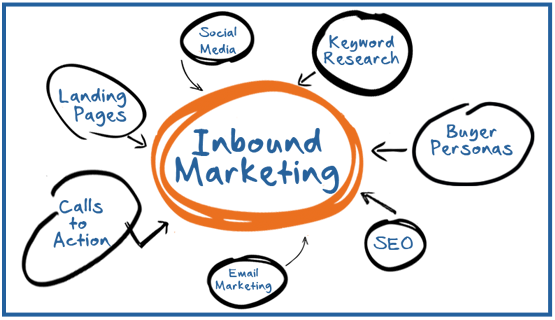Agencia 92: Your Source for Trending News
Stay updated with the latest insights and stories that matter.
Inbound Marketing: Where Customers Come to You, Not the Other Way Around
Discover how inbound marketing transforms your approach, attracting customers effortlessly while they come to you! Unlock the secret to success now!
Understanding Inbound Marketing: How to Attract Customers Effortlessly
Understanding inbound marketing is crucial for businesses looking to attract customers effortlessly in today's digital landscape. Unlike traditional marketing, which often relies on disruptive tactics, inbound marketing focuses on creating valuable content that draws potential customers in. This approach enables businesses to build trust and establish relationships with their audience over time, ensuring that when customers are ready to make a purchase, they think of your brand first.
The core principles of inbound marketing can be summarized in three key stages: Attract, Engage, and Delight. Firstly, to attract your target audience, develop high-quality content that addresses their specific needs and interests. This includes blog posts, social media updates, and informative videos. Next, engage your visitors with personalized experiences and interactions, such as email marketing and chat support. Finally, delight your customers by providing exceptional service and valuable resources even after a purchase, encouraging repeat business and referrals.

The Key Components of an Effective Inbound Marketing Strategy
An effective inbound marketing strategy is essential for businesses looking to attract, engage, and delight their customers. The key components of this strategy include content creation, SEO, and social media marketing. By creating high-quality content that addresses the needs and interests of your target audience, you not only provide value but also establish your authority in your niche. Incorporating SEO best practices ensures that your content is discoverable, helping to drive organic traffic to your website. Additionally, leveraging social media platforms allows for broader distribution of your content, enhancing your brand's visibility and fostering community engagement.
Another vital aspect of inbound marketing is lead nurturing. This involves guiding potential customers through their buyer's journey with targeted emails and personalized content. Additionally, analytics play a crucial role in assessing the performance of your inbound marketing strategy. By utilizing tools to track website traffic, conversion rates, and user engagement, businesses can make data-driven decisions to optimize their marketing efforts. Ultimately, a successful inbound marketing strategy is a continuous loop of attracting new visitors, converting them into leads, nurturing those leads, and delighting customers to transform them into loyal advocates.
How to Create Content That Draws Customers to Your Business
Creating content that draws customers to your business starts with understanding your target audience. Conduct thorough market research to identify their interests, pain points, and preferences. Use this data to craft engaging content that resonates with them. Consider utilizing various formats such as blog posts, videos, and infographics to cater to different learning styles. Always optimize your content with relevant keywords to enhance search engine visibility, thereby increasing the chances of attracting potential customers.
Once you have created quality content, promote it effectively across multiple platforms. Utilize social media channels, email newsletters, and collaboration with influencers to broaden your reach. Additionally, encourage user-generated content and feedback to build community engagement and trust. Remember to include strong calls-to-action that guide your audience on what steps to take next, whether that’s signing up for a newsletter, commenting on a post, or making a purchase. By focusing on the needs of your audience and continually improving your approach, your content will become a powerful magnet for drawing customers to your business.